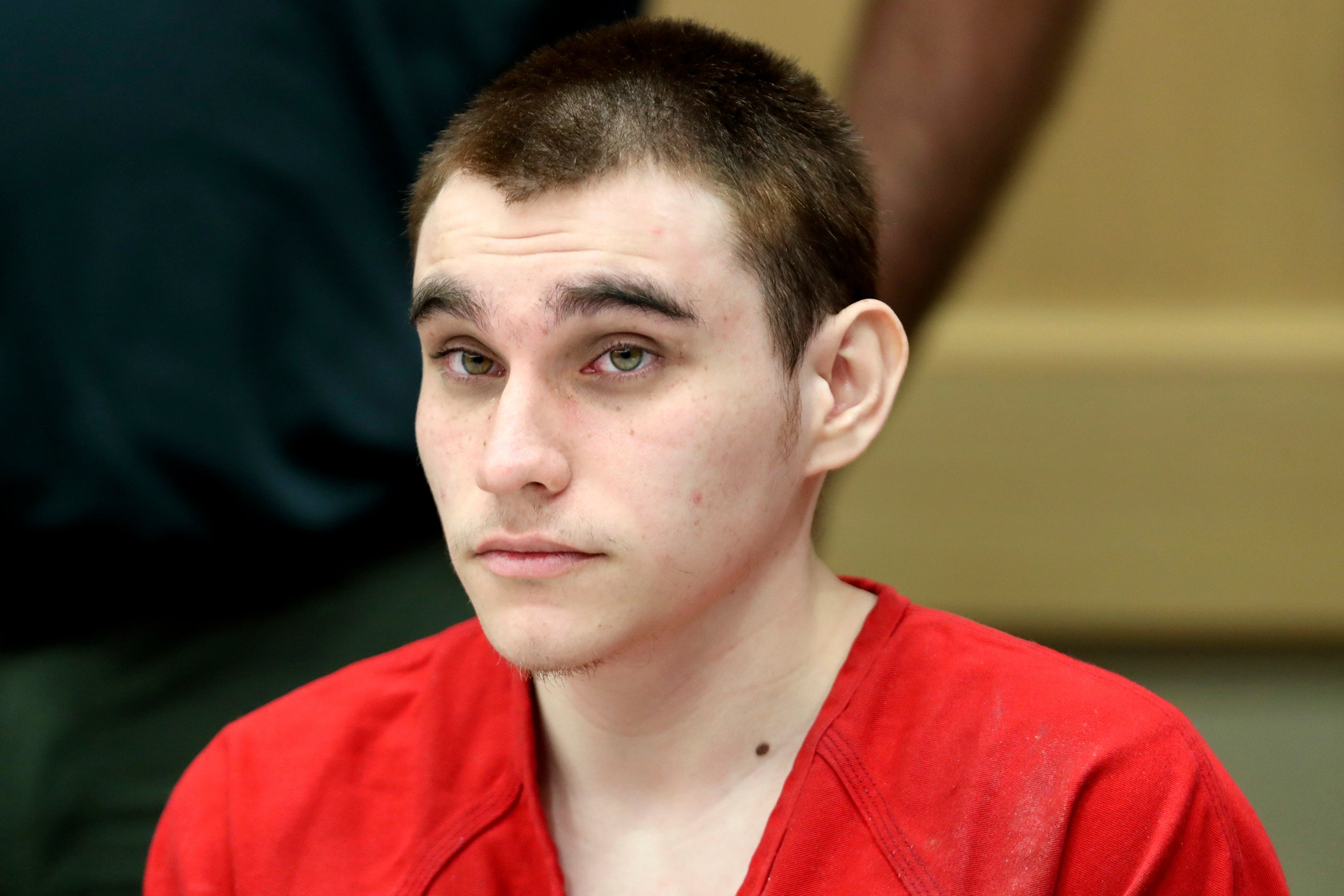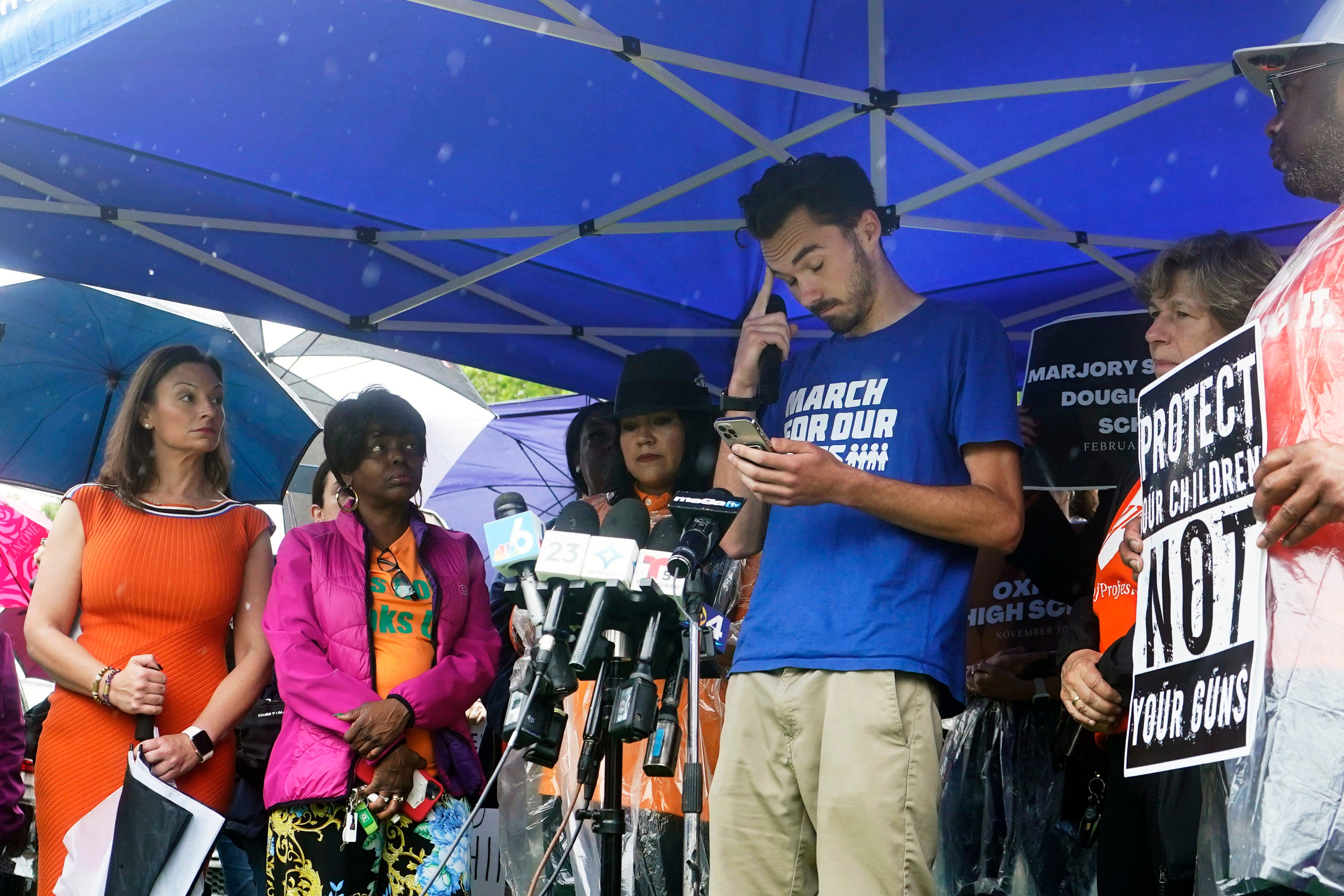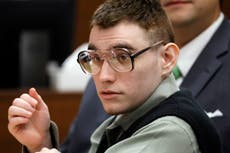Nikolas Cruz sentencing: A timeline of the Marjory Stoneman Douglas High School shooting
Former student sentenced to life in prison for attack that killed 17 people and wounded 17 others in Parkland, Florida, on 14 February 2018
A jury has recommended a life sentence for Nikolas Cruz, the man convicted of shooting dead 17 people and injuring 17 others at Marjory Stoneman Douglas High School in Parkland, Florida, on 14 February 2018.
Cruz – a former student at the institution who was a member of its air rifle team and had a lengthy disciplinary record – was just 19 when he arrived that day in an Uber bearing a legally-purchased AR-15 semi-automatic rifle and gunned down 14 students and three members of staff in what proved to be one of the deadliest school massacres in American history.
He was arrested later that day by police and pleaded guilty to 17 charges of first-degree murder and 17 of attempted murder, his actions sparking a nationwide protest movement demanding tighter gun control measures and an unsavoury political debate in which survivors of the attack including David Hogg and Emma Gonzalez were accused of being paid “crisis actors” by conspiracy-minded members of the right-wing commentariat.
Cruz arrived on the campus on the day of the attack at approximately 2.19pm wearing a maroon shirt bearing the school’s crest and carrying a black duffel bag containing his weapon and multiple magazines of ammo, some of which reportedly had swastikas drawn on them, consistent with their owner’s racist online persona.
He was recognised by a school watchman walking “purposefully” towards Building 12, which contained 30 classrooms, but they failed to call a “Code Red”, subsequently citing a training technicality as their excuse for hesitating.
Cruz duly entered the bloc two minutes later and camped out on a stairwell to unpack his rifle.
“You better get out of here,” he warned 15-year-old student Chris McKenna, passing by.
“Things are going to start getting messy.”
As Mr McKenna ran for help, Cruz exited the stairs on a first floor and began firing indiscriminately down a corridor, blasting through doors in a rampage that killed 11 people and wounded 13 others in less than two minutes.
At 2.22pm, the school’s fire alarm was sounded to compel students to evacuate as the police were called.
One minute later, the school’s resource officer, deputy Scot Peterson, issued a radio alert warning that shots had been fired, suggesting that what he thought were bullets might alternatively be firecrackers.
He was subsequently seen in CCTV footage at the southeastern corner of Building 12 where he remained for the duration of the attack, a decision that saw him severely criticised in the aftermath and labelled a “coward” by then-US president Donald Trump, with Mr Peterson insisting that he had not been able to determine where the shots were coming from.
Cruz meanwhile returned to the stairs, again opened fire on the second floor but this time hit no one, before repeating the tactic on the third, killing his last six victims and injuring another four.

As terrified students cowered in classrooms, some reporting what was unfolding on social media, Cruz set up a bipod in the teacher’s lounge on which he mounted his gun with the intention of firing out onto the campus like a sniper.
However, he was unable to blow out the windows as they proved to be made from hurricane-resistant glass.
At 2.28pm, he ditched his weapon and escaped via another stairwell, managing to flee the scene by heading towards the school’s tennis courts and mingling with students so as to disguise himself, his shooting spree playing out in less than five minutes.
At 2.32pm, four Coral Springs police officers and two Broward County sheriff’s deputies entered the building for the first time and were confronted with the horrific consequences of Cruz’s actions.
After leaving the Stoneman Douglas grounds, the killer entered a Walmart in Coral Springs at 2.50pm, stopped at a Subway restaurant for a soda, sat in a McDonald’s and was spotted by Broward County police officer Michael Leonard, who arrested him in the town’s Wyndham Lakes neighbourhood at 3.41pm.
At a press conference at 6.27pm, Broward County sheriff Scott Israel confirmed the death toll and identified Cruz as the suspect in custody.
Candlelit vigils held for the victims later that evening were attended by thousands of mourners and saw chants of “No more guns!” erupt from the grief-stricken mourners.
The next day, Cruz appeared in court and was described by his public defender as a “deeply troubled child who has endured a lot of emotional trauma in a short period of time”, alluding to the deaths of his foster parents and chaotic adolescence.
In the days after the atrocity, some of the Parkland survivors banded together to form Never Again MSD, a protest group calling for an end to gun violence.

On 7 March, a grand jury indicted Cruz on 34 charges.
On 9 March, Florida’s then-governor Rick Scott signed a bill into law that implemented new restrictions to the state’s gun laws and also allowed for the arming of teachers trained to use firearms.
On 13 March, Cruz was arraigned and the prosecution filed notice of their intent to seek the death penalty.
On 14 March, a judge entered a “not guilty” plea on the accused’s behalf after a proposal from Cruz’s attorneys that he plead guilty in exchange for the prosecution dropping its call for his execution was rejected.
On 24 March, the March for Our Lives demonstration was held in Washington, DC, organised by Never Again MSD and demanding national action.
On the year anniversary of the attack, Valentine’s Day 2019, the bereaved families, students and staff of Marjory Stoneman Douglas reunited at an emotional memorial for the victims.
On 20 October 2021, Nickolas Cruz finally pled guilty to all charges and apologised for his actions.
His sentencing was delayed multiple times because of the Covid-19 pandemic but finally began on 18 July.
On 4 August, the prosecution rested its case, ending almost three weeks of graphic testimony including details about the final moments of the victims.
Jurors were taken to the site of the massacre and toured the school, seeing it just as it was left after the deadly mass shooting.
On 22 August, the defence began its case, arguing for Cruz to be sentenced to life in prison rather than the death penalty.
The case was sent to the jury on 11 October. The following day, jurors returned their recommendation of life in prison.
Families of Parkland victims returned to court on 1 November to give impact statements at Cruz’s sentencing hearing.



Bookmark popover
Removed from bookmarks